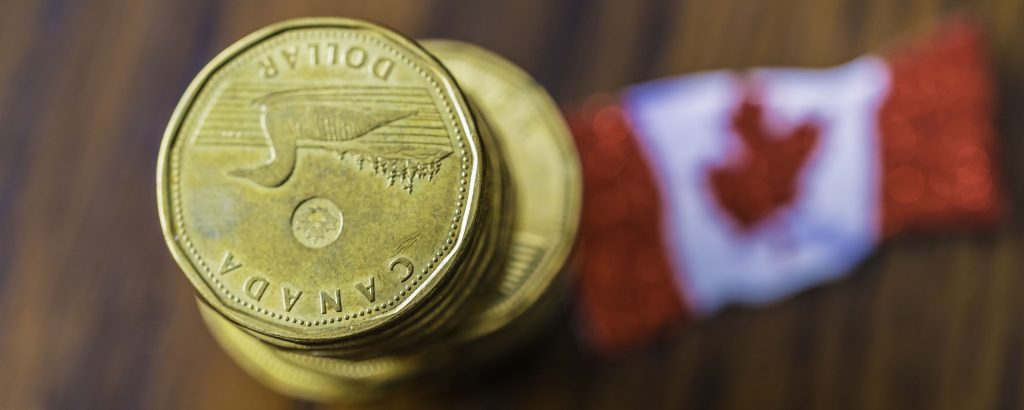Canada enjoys both English and French official languages. But the country’s slang might make it a bit difficult to communicate regardless if you’re fluent in both languages. Here are the most popular Canadian slang phrases and terms you need to learn before visiting the country.
Table of Contents
25. Loonie

A loonie is a $1 coin in Canada. Its name comes from the loon bird, seen on one side of the coin. If you’re shopping in Canada, you might also hear the term ‘toonie’. It refers to the $2 coin with a similar nickname.
24. Parkade
In Canada, a parking garage is called a Parkade. It mainly refers to parking spaces with a roof. The term isn’t used for bike parks and it’s only used to describe parking for motorized vehicles.
23. Eh
Eh can be used to reinforce a statement or it can be added at the end of a question. It’s going to be sunny today eh? A simple way to understand ‘eh’ is to simply replace it with ‘right?’. ‘I think this meal is overpriced, eh?’.
22. Tuque
A type of knitted hat worn in the coldest days of the year. Toque is another spelling of the word and it can be used for knitted hats with attached gloves.
21. Double Double
This phrase is used for ordering coffee with double cream and double sugars, typically at Tim Hortons. Double Double isn’t particularly popular in other coffee places as Canadians love Tim Hortons the most. However, there’s a queue to get a Double-Double in this coffee shop, showing that quality coffee roasters are also appreciated.
20. Two-four
If other countries have 6-packs, Canada has two-fours. The terms describe a box of 24 beers. Two-four isn’t printed on the boxes of beer as you’ll normally see them printed with ’24 bottles’ markings.
19. Mickey
A flask bottle of beer or a flask bottle. The term is also used in New Zealand and Australia but Canadians argue it was they who used it first.
18. That’s jokes

The phrase is used to agree on the humorous side of a joke. It’s mostly a popular slang phrase for young Canadians.
17. Chesterfield
A type of old couch. Unlike ‘that’s jokes’, ‘Chesterfield’ isn’t used by the young population of Canada, and its slowly fading out of usual language use. It’s only the old generation that uses the term. If you see it in stores, the term ‘Chesterfield’ is normally attributed to tufted upholstery.
The term ‘Chesterfield furniture’ is also used to describe office furniture and bedroom furniture. All of these furniture pieces are made with tufted upholstery which the British claim as the true inventors of.
16. Hydro bill
A phrase used to describe utility bills such as gas and electricity bills. The term might seem to be exclusive to water bills, but Canadians use it to describe general household bills.
15. Tap
The Canadian version of faucet. The term is also widely used in other English-speaking countries. It has multiple uses internationally. If in Canada ‘tap’ refers to the cylindrical pipe or container that controls water in the sink, it can also be used to describe listening secret conversations. My phone was ‘taped’ means ‘my phone was listened to’.
14. Pencil crayons
If Americans use pencils for all pencils, Canadians use pencil crayons for colored pencils. The term ‘pencil crayons’ is also widely used in the Commonwealth. However, it’s not all types of colored pencils that fall under this term as its exclusive to pigmented cores in cylindrical wooden cases.
13. Dinged
A term used to describe having to pay for something. In the US, dinged refers to car dents. ‘Dinged’ can also be referred to as the feeling you get when getting unexpected negative feedback, such as getting a bad grade at school.
12. Elastics
All rubber bands are called elastics in Canada. You can use elastics for your office stationery. Elastics are also used to describe other similar products such as fitness rubber bands. Your fitness trainer might send you to purchase ‘elastics’, referring to rubber bands.
11. Gonger or Gong Show
In the US, Gong Show is the type of TV show everybody makes fun of. In Canada, the term Gonger or Gong Show is used to describe events which unfolded unexpectedly or chaotic situations.
10. Hang a Larry
A phrase used to give indications to the driver to take a left turn. ‘Hang a Roger’ is the term used to giving indications to the driver to take a right turn.
9. Knapsack

A term used to describe backpacks. It’s mainly used for hiking backpacks, which are a bit larger than other types of backpacks (i.e. laptop backpacks).
8. Chinook
An old Inuit word now used to describe unexpected warm winds in the winter which melt snow at high altitudes. A ‘Chinook’ can’t be used to describe an expected temperature elevation such as the coming of spring.
7. Serviette
An alternative term used for napkins with possible French origins. To US citizens, it’s almost unknown, similarly to ‘icing sugar’ (powdered sugar).
6. Snowbirds
This term is used to describe Canadians who migrate to warmer climates during the winter or when the temperature suddenly drops. It normally has pejorative connotations and it isn’t taken lightly by those addressed to.
5. Housecoat
A term used to describe a coat worn at home. The American housecoat alternative is the bathrobe.
4. Champagne birthday
The term doesn’t have anything to do with champagne. It simply describes the matching of your age with your date of birth. When you celebrate your 25th birthday on the 25th of May, for example, you call it your champagne birthday.
3. Beauty
A praising term used to describe a job, a service, or a product that has been well made. ‘Beauty’ is the Canadian alternative to the European ‘German quality’ term.
2. Stag party
The Canadian version of a bachelor party. ‘Stag party’ isn’t exclusively Canadian, however. The term is also partly used in the United Kingdom and Cyprus.
1. Queue
The term used to describe a lineup. Queueing is the verb for sitting in line.

















